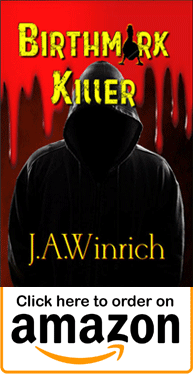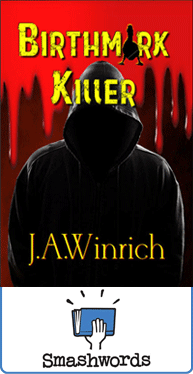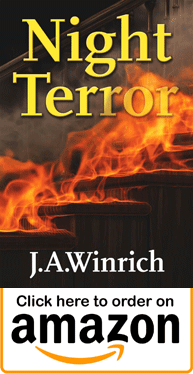My speaking engagement on Nov. 1, 2016 went well.
It’s been awhile, but here are the last clichés:
Do it up Brown–To do something perfectly. Not sure where it came from. Might allude to the brown color of meat that has been thoroughly cooked. To Do Brown first appeared around 1600 in England. However the exact phrase was used in print only in the mid-19th century and in the U.S. (“‘Done up brown,’ as they say on the Bowery,” Lorenzo Dow, Sermons, c. 1849). One of Eric Partridge’s consultants believed that “brown” referred to John Brown’s raid on Harpers Ferry (1859), an incident contributing to the Civil War, but the term was known before that. But to do someone up brown meant to deceive someone, and to do oneself up brown meant to get oneself into a jam. Both are obsolete.
Picture Perfect–Exactly right, especially in appearance. From the 12th century. It alludes to the precise resemblance of a painting or photograph to its subject, as in “The day was picture perfect for a picnic–not a cloud in the sky.” Time Magazine used the term as the caption for a photograph of the presidential candidate Al Gore, his wife Tipper, running mate Joe Lieberman, and Lieberman’s wife Hadassah, calling it “the purest moment of their campaign” (August 21, 2000).
So did you find them?
Even though I wasn’t a silver-tongued orator yesterday, I’ll pass on some of what I spoke about.
There are 3 types of Antagonists:
- The antagonist is an obstacle that gets in the protagonist’s way and prevents her from achieving her goal. Can be a person or nature or society. Like cancer, or an avalanche, or a bully.
- The antagonist is a villain who has a goal that goes against what the protagonist wants. Unlike an obstacle, the villain has a goal of his own that often doesn’t even involve the protagonist until she is compelled to stop him because she doesn’t want his horrific plan to come to pass. They are usually in crime stories. My antagonists are villains, at least that’s how I see them.
- The antagonist is a competitor; he wants the same thing the protagonist wants. They have the same goal, and if one succeeds the other fails. They say that these are usually common in thrillers, action/adventures and heist stories, where both are after the same priceless artifact, etc. Even though I write thrillers, my antagonist is a villain, and I’m sticking to that.
When I write, I write in two different tenses. The Protagonist is in third person, past tense. Then, with their own chapters, I write in the killer’s POV in first person, present tense. I do that so you know when you are in the killer’s mind set.
An example from my writing would be from Vanity Killed, Chapter 1 first page:
Today, the prized possession dies.
I hide behind the brocade drapes and peer through the sheer curtains at the front parlor window. Everything looks distorted.
My heart pounds. Blood rushes through my veins. Chills shoot up and down my spine. I shudder from the rush. The kill is happening again.
The window stands ajar and I hear Sarah Hudson’s heels staccato-click on the brick walkway outside. Carsonville’s foghorn blasts its eerie warning. The clicking halts. Sarah tilts her head. I feel certain she abhors that warning of imminent grayness closing in just like I do. We detest the cloying salt sea odor that mixes with the stench from the pulp mill. That mill has been spewing its odors for decades, but will soon be shut down.
The minute I learn she wants away from her Northern California home town, I set my plan in motion. Sarah Hudson will spend eternity here.
Let me get to the point. There are all kinds of tips for writing your Antagonist or Killer. Use the internet and do research.
Some say your Antagonist is more important than your protagonist. You need to build a solid villain. Even the greatest protagonist in the world cannot truly shine without an equally well-rendered opposition. However, the reverse is not true. Your protagonist, even if a bit shaky, and your villain shines, you can still tell a very successful story.
Of course, you spend equal time developing your characters whether a protagonist or an antagonist. They should be equal in strength, so they can fight a good fight. I try to develop all of my characters in my books, no matter who they are, because as you’ll see, they might turn out to be my killer.
Depending on the type of antagonist, they either have conflicting goals or the same. However, the Antagonist is the character who MOST stands in the way of the protagonist achieving the story goal.
The Antagonist and Protagonist should have conflicting characteristics. But, your villain doesn’t have to be evil. Again, that depends on the type of story and type of antagonist you are using. Don’t make the antagonist too weak or too strong. My killers are evil. As my editor says, “You may know me as a shy, loving person, but I have an alter ego you do not want to meet in an alleyway!” Where that comes from, I have no idea. Might have come from my husband who was always reading true crime stories. Some of those killers are scarier than what I could come up with. Always told people, if something ever happens to me, look toward my husband. Now, I think the reverse might be true?
I have lots of get up and go, but I’ll stop here and continue my antagonist tips and how to choose a killer for next week.
In the meantime, Keep Writing,
Julie



